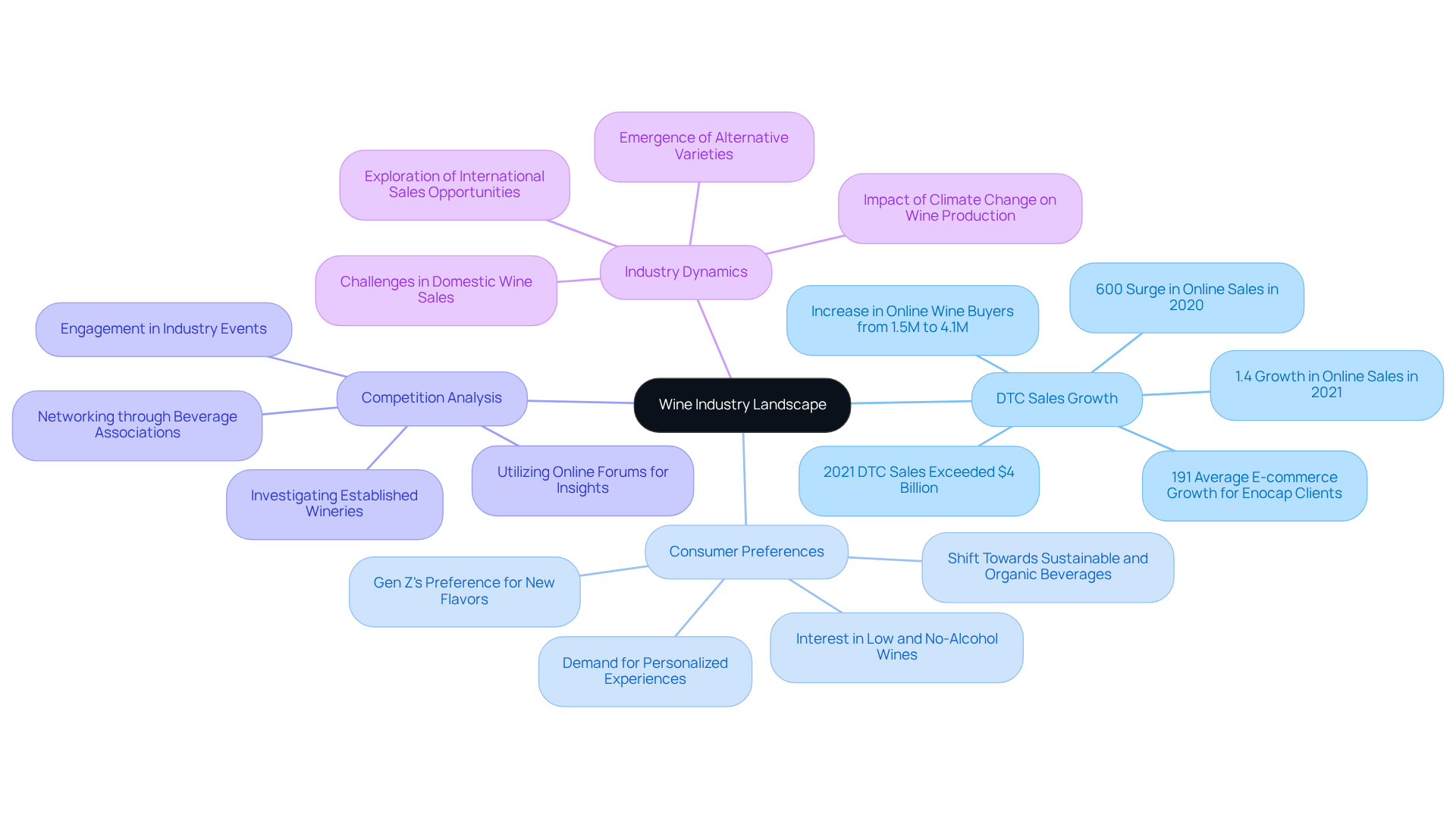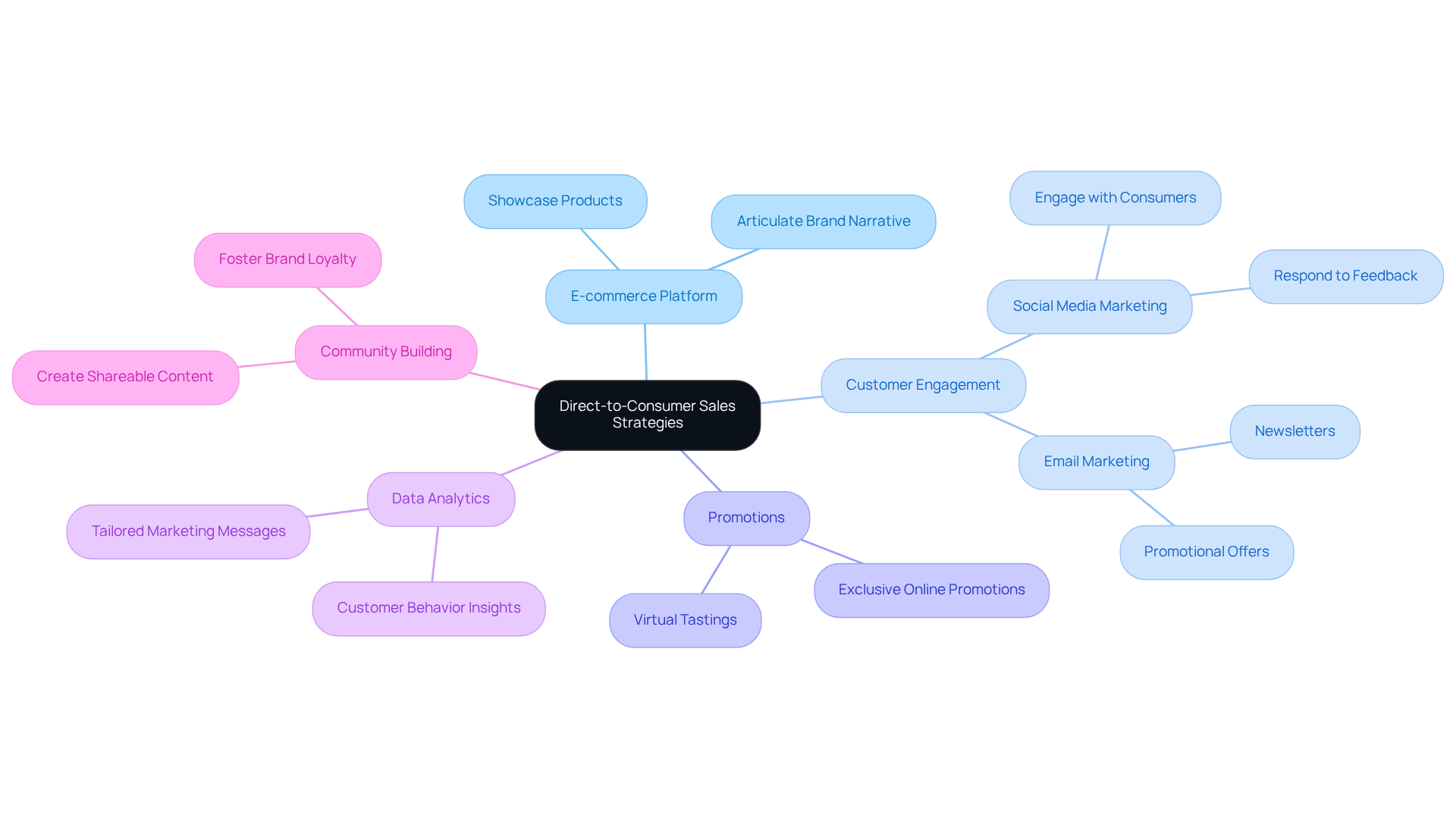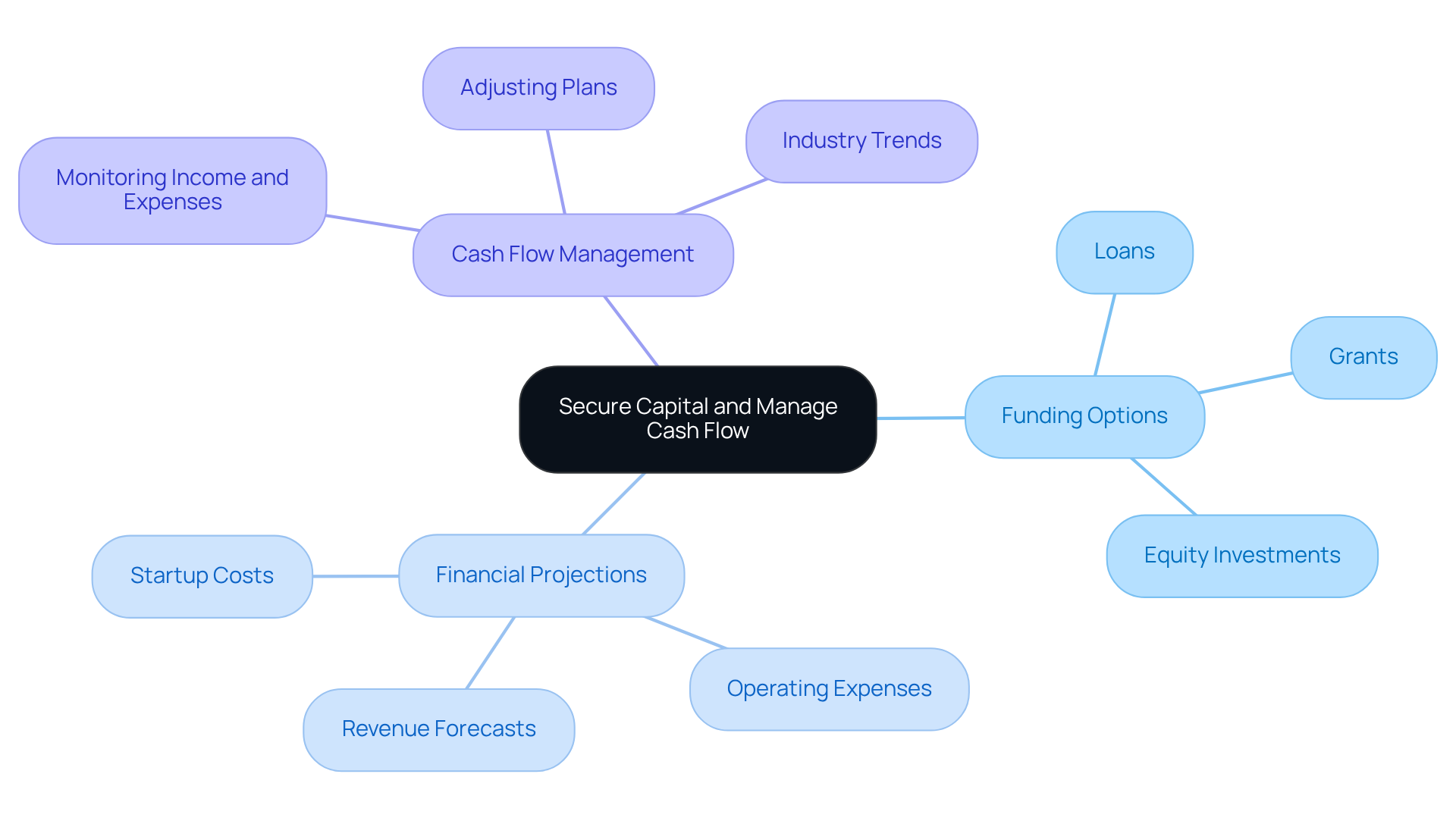Overview
Launching a successful wine business demands not only a profound comprehension of the market landscape but also the implementation of effective direct-to-consumer sales strategies and sound financial management.
Success in this competitive arena is predicated on the ability to adapt to shifting consumer trends, harness the power of digital marketing, and establish robust cash flow systems.
Collectively, these elements empower new wineries to flourish in an ever-evolving industry.
Introduction
In a world where consumer preferences are rapidly evolving, the wine industry stands at a pivotal crossroads. With direct-to-consumer sales surging and sustainability taking center stage, aspiring vintners have a unique opportunity to carve out their niche in this dynamic market.
However, the path to success is fraught with challenges. How can new entrants effectively navigate competition, optimize their offerings, and secure the necessary capital to thrive?
This guide delves into key strategies for launching a successful wine business, equipping entrepreneurs with the insights needed to flourish in an increasingly competitive landscape.
Understand the Wine Industry Landscape
To successfully navigate the wine industry, [starting a wine business](https://blog.enocap.com/how-to-make-direct-sales-thrive-for-your-winerys-success) requires conducting thorough research on the current market landscape. A key trend is the remarkable growth of direct-to-consumer (DTC) sales, which exceeded $4 billion in 2021. This reflects a significant shift in how consumers interact with vineyards. The volume of online sales grew by 1.4 percent in 2021, following an astonishing 600 percent surge in 2020. This highlights the critical need for vineyards to establish a . Furthermore, consumer preferences are increasingly shifting towards sustainable and organic beverages, prompting producers to adjust their offerings accordingly.
Examining competition is essential for starting a wine business; investigating established wineries and their marketing approaches allows for the recognition of effective practices. Engaging with industry events, joining beverage associations, and participating in online forums can provide valuable insights and networking opportunities. Significantly, Enocap clients experienced an average e-commerce increase of 191% in 2020, underscoring the transformative effect of effective DTC strategies. The number of online beverage purchasers surged from 1.5 million to 4.1 million, illustrating the effectiveness of these approaches in enhancing customer loyalty and driving growth. This groundwork equips you with the knowledge needed to position your establishment effectively in a rapidly evolving market, where personalized experiences and compelling storytelling are becoming essential for attracting and retaining customers. As the industry continues to evolve, understanding these dynamics will be vital for long-term success.

Develop Direct-to-Consumer Sales Strategies
Begin by developing an intuitive e-commerce platform that not only showcases your products but also articulates your brand's unique narrative. Engage potential customers through social media and email marketing to drive traffic to your site. Exclusive online promotions and virtual tastings can effectively capture interest and stimulate purchases. Utilize to gain insights into customer behavior and preferences, allowing you to tailor your offerings and marketing messages. A robust online presence not only boosts sales but also fosters a loyal community around your brand. Notably, 87% of winery managers report that their social media presence positively influences sales, underscoring the essential role of digital engagement in today's market. As you devise your strategy, consider leveraging various social media platforms, as this approach has been statistically linked to increased beverage sales. Consistency in branding and content posting is crucial for building momentum and effectively reaching your target audience.

Optimize Wine Club Memberships for Growth
To effectively enhance your club, begin by establishing membership tiers that provide distinct advantages, such as exclusive access to limited releases, discounts, and members-only events. This tiered approach not only elevates perceived value but also addresses diverse customer preferences. Consider offering unique experiences for club members, such as private cellar tours and special tastings, to foster stronger emotional connections and enhance loyalty. This aligns seamlessly with innovative direct-to-consumer strategies that promote sustainable development.
Promote your beverage club through multiple channels, including your website, social media platforms, and during tasting events, to maximize visibility and engagement. Regular communication is essential; engage members with newsletters that highlight updates on new releases, upcoming events, and personalized recommendations tailored to their preferences. This creates a , which is crucial for retention and reflects the storytelling aspect that resonates with customers.
Moreover, monitor key membership metrics, such as conversion rates, churn rates, and average member lifetime value (LTV), to identify trends and areas for improvement. By concentrating on the 20% of contacts that generate 80% of sales, as suggested by the Pareto rule, you can effectively identify and engage your most valuable customers. Continuously refining your offerings based on these insights ensures that your wine club remains appealing and relevant in an evolving market, which is crucial when starting a wine business and planning for future growth opportunities.

Secure Capital and Manage Cash Flow Effectively
To create a thriving vineyard, is essential and requires a comprehensive business plan that meticulously outlines your financial projections, encompassing startup costs, operating expenses, and revenue forecasts. As we look to 2025, vineyards have the opportunity to explore a variety of funding options, including:
- Loans
- Grants
- Equity investments specifically tailored for the industry
Notably, Enocap's clients experienced an impressive average e-commerce increase of 191% in 2020, underscoring the financial potential of effective direct-to-consumer strategies. Enocap offers strategic capital advisory services that empower family-owned wineries to uncover expansion opportunities through customized debt, equity, and acquisition solutions, complemented by demand generation approaches and customer retention initiatives.
Implementing a robust cash flow management system is crucial for monitoring income and expenses, enabling you to fulfill financial obligations while simultaneously investing in growth opportunities. Regularly assessing your financial performance allows for timely adjustments to your plans, ensuring a healthy cash flow and the capacity to secure essential capital for growth. As the market evolves, remaining informed about industry trends can significantly enhance your funding strategies, effectively positioning your winery for long-term success.

Conclusion
Launching a wine business demands a multifaceted strategy that encompasses a deep understanding of market dynamics, the development of effective sales strategies, the optimization of memberships, and adept financial management. This journey requires not only a passion for wine but also a strategic mindset to navigate the complexities of the industry. By prioritizing direct-to-consumer sales and crafting a compelling brand narrative, emerging wineries can successfully carve out a niche in a competitive market that increasingly values personalized experiences and sustainability.
Key insights underscore the necessity of establishing a robust online presence, engaging potential customers through social media, and cultivating wine club memberships that foster loyalty. Moreover, securing the necessary capital and effectively managing cash flow are critical components that significantly influence a vineyard's success. By leveraging data analytics to comprehend customer behavior and continuously refining marketing strategies, businesses can enhance their growth potential and adapt to evolving consumer preferences.
Ultimately, the wine industry offers a wealth of opportunities for those willing to invest time and resources into understanding its landscape. With the right strategies in place, aspiring vintners can not only thrive but also contribute to the rich tapestry of wine culture. Embracing innovation and sustainability will resonate with today's consumers and pave the way for a successful and enduring wine business.
Frequently Asked Questions
What is a key trend in the wine industry regarding sales?
A key trend is the remarkable growth of direct-to-consumer (DTC) sales, which exceeded $4 billion in 2021.
How did online sales in the wine industry perform in 2021?
The volume of online sales grew by 1.4 percent in 2021, following a significant 600 percent surge in 2020.
Why is it important for vineyards to establish a strong online presence?
Establishing a strong online presence is critical due to the significant shift in how consumers interact with vineyards, particularly as DTC sales continue to grow.
What consumer preferences are influencing the wine industry?
Consumer preferences are increasingly shifting towards sustainable and organic beverages, prompting producers to adjust their offerings accordingly.
Why is examining competition essential when starting a wine business?
Investigating established wineries and their marketing approaches allows new businesses to recognize effective practices and strategies within the industry.
How can industry events and associations benefit someone starting a wine business?
Engaging with industry events, joining beverage associations, and participating in online forums can provide valuable insights and networking opportunities.
What was the impact of effective DTC strategies on Enocap clients in 2020?
Enocap clients experienced an average e-commerce increase of 191% in 2020, highlighting the transformative effect of effective DTC strategies.
How did the number of online beverage purchasers change recently?
The number of online beverage purchasers surged from 1.5 million to 4.1 million, illustrating the effectiveness of DTC approaches in enhancing customer loyalty and driving growth.
What is becoming essential for attracting and retaining customers in the wine industry?
Personalized experiences and compelling storytelling are becoming essential for attracting and retaining customers in the evolving wine market.
Why is understanding the dynamics of the wine industry important for long-term success?
Understanding these dynamics is vital for positioning a business effectively in a rapidly evolving market, ensuring long-term success.




